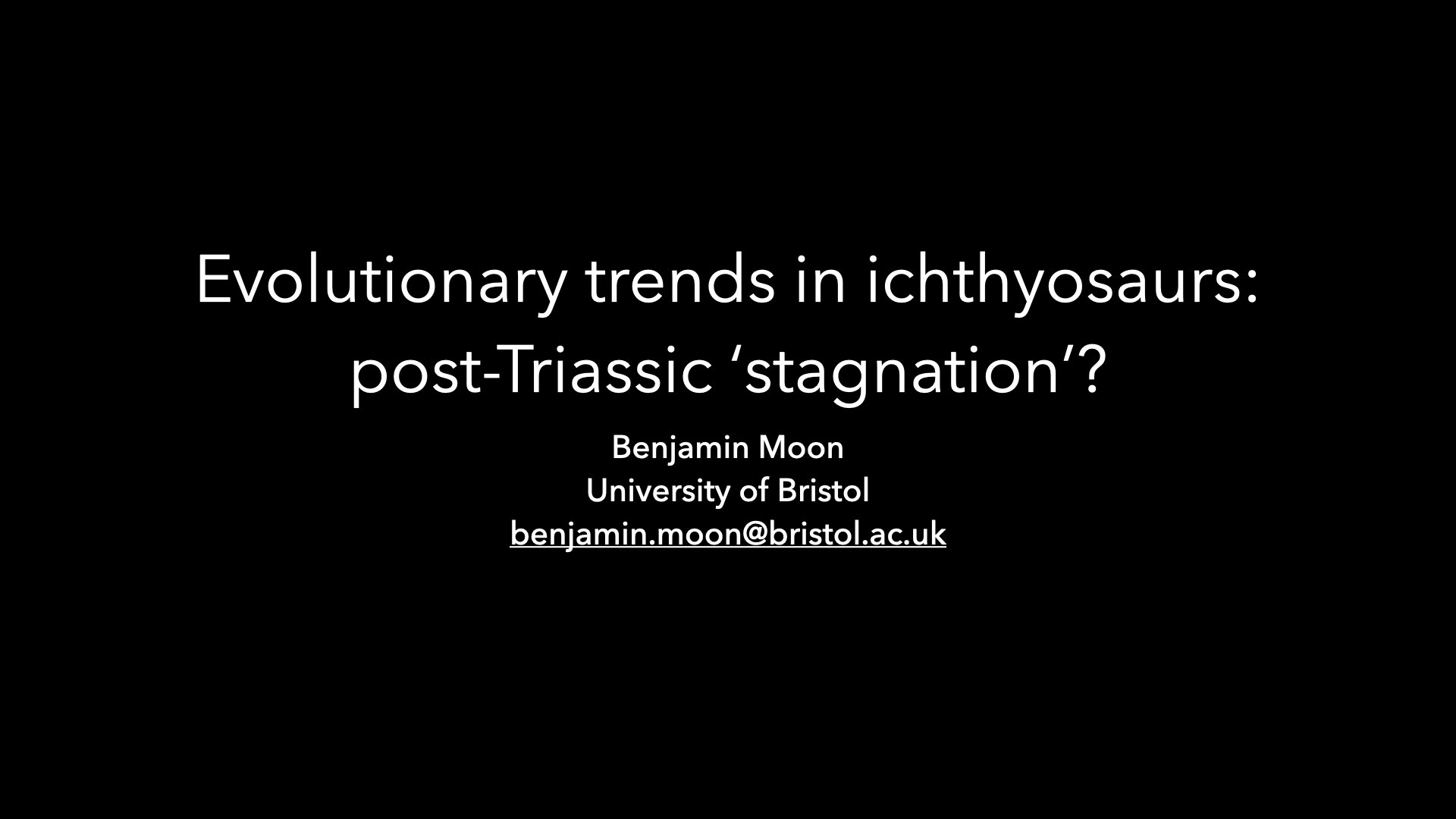Evolutionary trends in ichthyosaurs: post-Triassic ‘stagnation’?
Moon, B.C. 2016 Evolutionary trends in ichthyosaurs: post-Triassic ‘stagnation’?. SVPCA 2016 (Liverpool)
This is a fairly direct follow up to my 2014 SVP talk in Berlin using an updated version of my large ichthyosaur phylogeny (Moon 2019) and doing a more complete set of analyses looking at cladistic disparity and the evolution of some phenotypic traits. The titles summarises my results: ichthyosaurs didn’t do such interesting things after the Triassic (Moon & Stubbs 2020).

Abstract
Ichthyosaurs are some of the most commonly found Mesozoic marine reptiles, and perhaps the most completely adapted to a marine existence. Despite 200 years of study, the relationships of ichthyosaurs are unstable and not certainly known. By constructing a new large phylogenetic supermatrix for ichthyosaurs and analysing and testing this using various optimisation criteria, regions of instability have been identified that correlate with periods of rapid radiation, such as the Early—Middle Triassic and Early Jurassic. Previous relations are confirmed, but the monophyly of some taxa is questioned. However, this supermatrix and the posterior sample of phylogenetic trees provides hypotheses of ichthyosaur evolution that can be used to examine their long-term evolutionary trends. We use cladistic morphometrics to show that there is a shift in morphospace occupation during the Late Triassic. While morphologically disparate in the Triassic, ichthyosaur disparity declined into the Early Jurassic and became more conserved, but until their extinction in the early Late Cretaceous. This differs from other diversity measures in ichthyosaurs and marine reptiles — e.g. ecospace and functionspace occupation. Associated with this is a deceleration of evolutionary rates in phenotypic characters: body size and skull size, although orbital ratio shows less obvious changes. Ichthyosaur remains are well known from several lagerstätten, but the paucity of diagnostic fossils from key periods of turnover makes for poor resolution of timescales at these events. Incorporation of phylogeny attempts to ameliorate these concerns, but leaves the likelihood of a hidden diversity at key intervals.
References
Moon, B.C. 2019. A new phylogeny of ichthyosaurs (Reptilia: Diapsida). Journal of Systematic Palaeontology 17 (2): 129–155. doi:10.1080/14772019.2017.1394922
Moon, B.C. and Stubbs, T.L. 2020. Early high rates and disparity in the evolution of ichthyosaurs. Communications Biology 3: 68. doi:10.1038/s42003-020-0779-6
